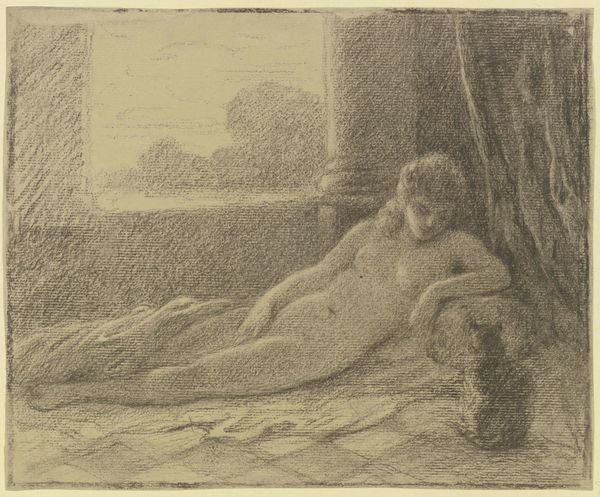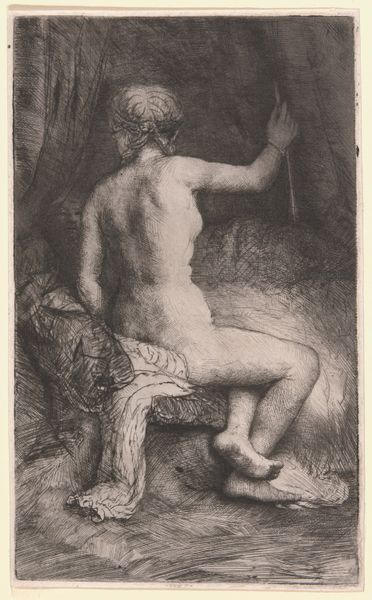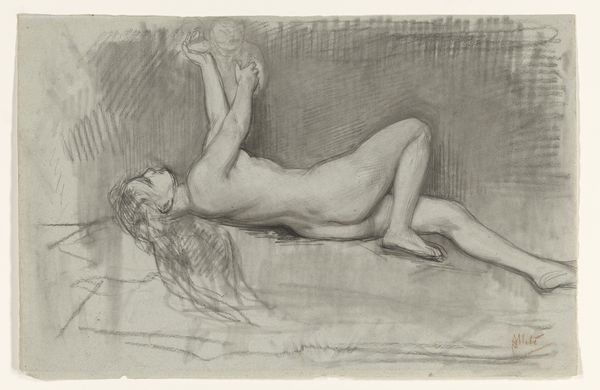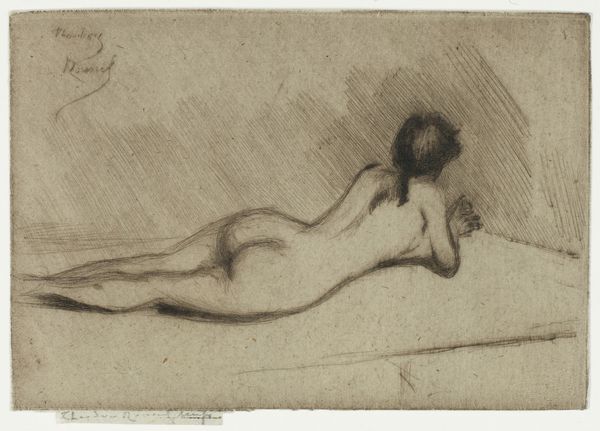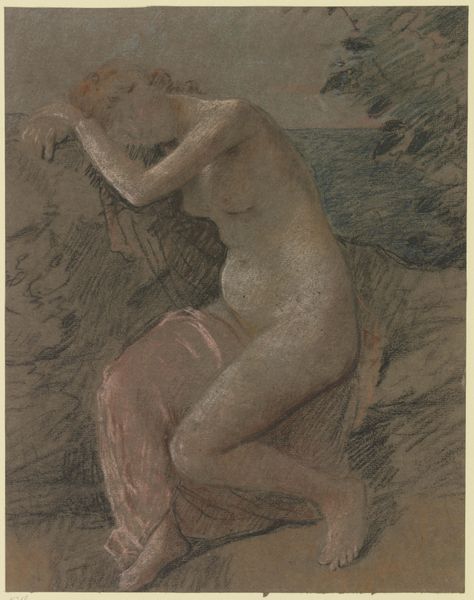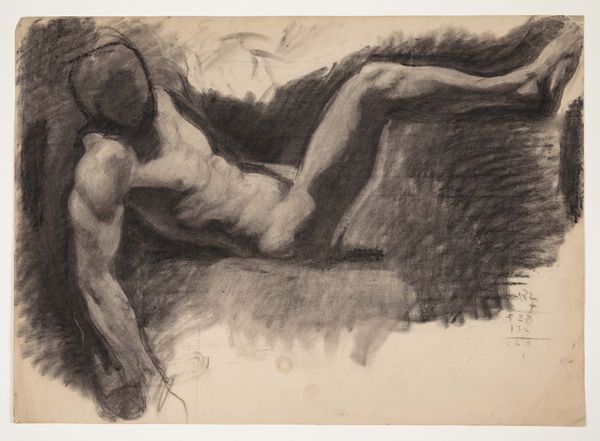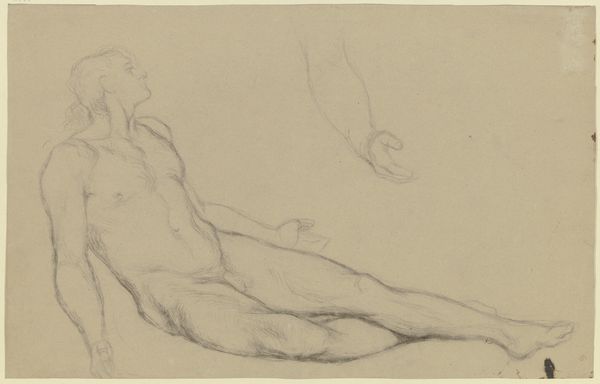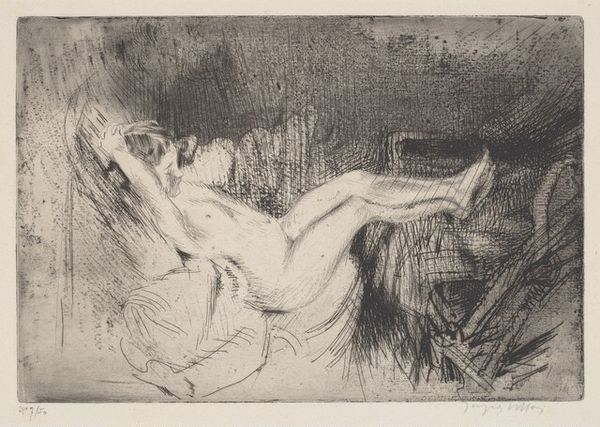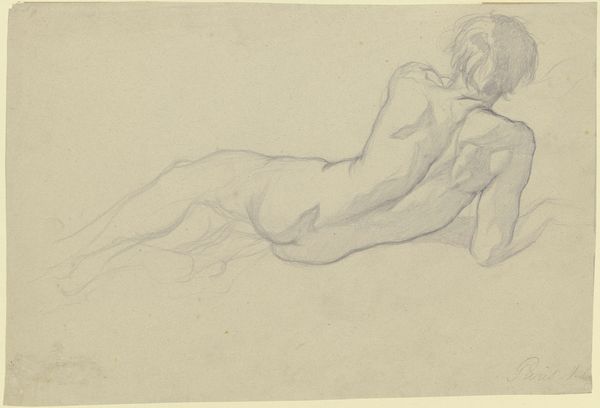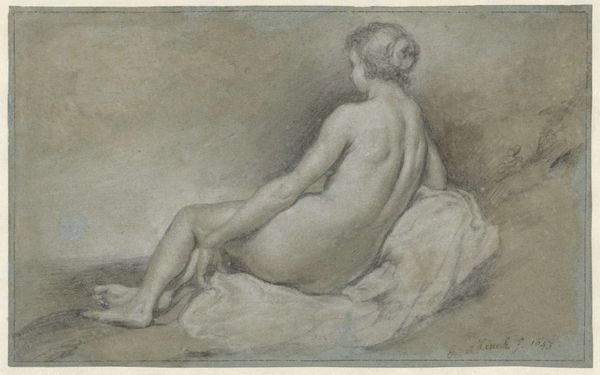
Copyright: Public Domain
Curator: What a poignant drawing. The Städel Museum holds this charcoal work by Otto Scholderer, made in 1889. Its title is "Lagernder nackter Jüngling in einer Landschaft," or "Reclining Nude Youth in a Landscape." Editor: The somber palette and the subject’s downcast gaze really strike me. It's evocative of isolation and quiet introspection. Curator: Scholderer, deeply embedded in the artistic debates of his time, particularly regarding Realism, likely intended to make more than a portrait study. He grappled with the academic conventions around the nude. Editor: Absolutely. Viewing this through a contemporary lens, it makes me think about how the male nude has historically been employed within art to explore ideas of beauty, vulnerability, and power—though typically seen through the male gaze. Here, there seems to be an acknowledgment, or perhaps critique, of that history. Curator: It’s important to consider how these depictions served as societal mirrors, reflecting, reinforcing, or challenging prevailing notions of masculinity and the body as both a site of identity and of political negotiation. The rendering, nearly monochromatic, also prompts us to consider the artistic restrictions around what could and could not be shown during that period. Editor: Exactly. The choice of charcoal as a medium also impacts the overall feeling. It lends itself well to expressing shadow, texture, and nuance. This gives depth to what otherwise would flatten if presented using traditional portrait styles common at the time. What could the artist be commenting on through those artistic choices? Curator: The youth is reclined within the nature. How might we read it in connection with concepts such as pastoral innocence? Editor: These ideas are often romanticized and come with associated power dynamics based on identity, sexuality, and cultural norms. Curator: Very insightful! By contemplating Scholderer’s place within the art-historical contexts alongside socio-political currents and the museum as a powerful social structure we arrive at novel understandings. Editor: Yes, analyzing the piece with attention to themes of identity, gender, and race offers new insights, challenging any singular interpretation. It reframes our understanding.
Comments
No comments
Be the first to comment and join the conversation on the ultimate creative platform.
